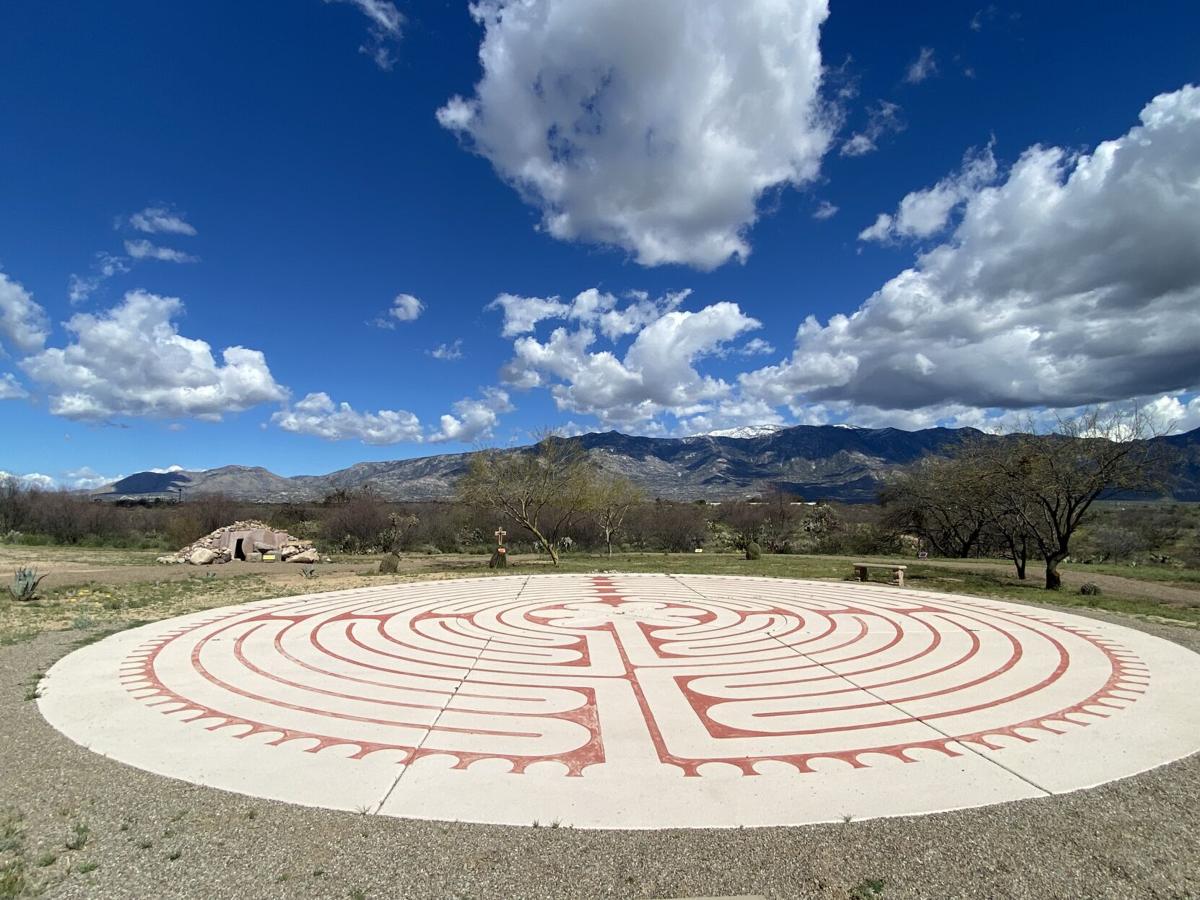People all over the world have created Labyrinths for thousands of years. They have been used as symbols by cultures from Peru to Iceland to Sumatra, and have been depicted in many different mediums—imprinted on coins, woven into baskets, laid in stone in European churches, dug into turf and carved into rock faces.
During the Middle Ages, labyrinths were incorporated into Christian religious practices as the faith spread across Europe. The development of the medieval seven-circuit Christian Labyrinth was a breakthrough in design that incorporated the symbol of the cross. During the Middle Ages, you could find one in nearly 25 percent of cathedrals. Because not everyone could make the journey to the Holy Land, walking a Cathedral Labyrinth was oftentimes a substitute for going on a pilgrimage to Jerusalem, becoming a devotional activity.
For several of the Native American peoples of Southern Arizona, the figure of a human at the entrance to a Labyrinth, informally called the Man in the Maze, is a central cultural symbol. For the Tohono O’Odham, who live near Tucson, it represents the creator God I’Itoi and the path to his hidden dwelling inside Baboquivari, a towering, monolithic peak southwest of Tucson that’s a “navel of the world”. It is near Sells and Kitt Peak Observatory.
The beautiful Vista United Methodist Church Labyrinth was built and dedicated in July 2005. Karl Anderson, a former SaddleBrooke resident, designed the Vista UMC Labyrinth and it was built by Church Project Members of painted concrete. The type is a Medieval Chartre replica.
The Labyrinth is an extraordinary invention: The simple act of walking it shifts ordinary linear perception via the physical experience of following the curving circuits. It is an ingenious pattern that packs a long, folded path into a small space. A Labyrinth is a walking meditation tool. It is a one-way path—one path into the center and the same path out.
The Vista UMC Labyrinth is on the World-Wide Labyrinth Locator and has been visited by many people over the years. Recently, the Stations of the Cross were completed on a path around the Labyrinth and they are spectacular! The new Stations of the Cross were featured last month in an article by Stuart Watkins. Many SaddleBrooke residents, who are Church members, were involved in making crosses and installing the Stations.




